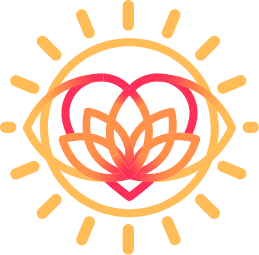🤡 Plate spinning
🤹♂️ Juggling balls
🐹 Hamster wheel…
You’d be forgiven for thinking I work in the circus, but these are the phrases that I hear over and over to describe the relentlessness of leading a school. As an ex-procrastinator with restless and pleaser saboteurs, I know how overwhelming the never ending to do lists can feel. My work as a wellbeing coach involves helping people to find the strategies that work for them, to improve their sense of self and control. In this blog, I want to introduce the ‘Eat the Frog’ methodology, a simple yet powerful approach to productivity, even if you’re a pro procrastinator! This technique provides tools to tackle the least appealing tasks with confidence, helping you navigate the never-ending to-do list and drastically reduce anxiety and overwhelm.
Below, I’ve broken the method down into actionable steps, specifically with your wellbeing in mind:
Step 1: Identify and Prepare to Eat Your Frog
The “frog” represents your most daunting and important task of the day. This is the task that, if completed, will have the most significant impact on your wellbeing and outcomes at work. As a leader, it could be a crucial strategic decision, a difficult conversation with a team member, or writing a response to a particularly challenging parent. It is nearly always something you don’t want to do!
When to identify the frog?
At the end of each workday, spend a few minutes identifying your frog for the next day. A frog is always an ‘important-urgent’ task and will often have serious consequences if it’s not completed. Consider your levels of anxiety and overwhelm a serious consequence! If you know you’ll alleviate those feelings by completing the task, then the task is a frog. You might think, “but everything is an important-urgent task!” While this might feel true, prioritise your frogs, as this helps bring perspective. Frogs can’t wait (there’s an immediate consequence), whereas other tasks (tadpoles) can.
Outline the steps required to tackle your frog. Break it down into manageable chunks if it feels overwhelming and set up your workspace the night before. Consider setting boundaries (e.g., an out-of-office message, a sign on your door, or informing your SBM that you’re not available between x and y) to reduce in-person and digital distractions. Consider what resources you need to complete the tasks and get them ready.
Step 2: Eating the Frog
Morning is the ideal time to address your most important task because you are typically more focused and have higher energy levels. Make sure you’ve fuelled yourself with breakfast (and coffee if you’re like me!)
Begin working on your frog as soon as you start your workday. Avoid checking emails or social media until you’ve made significant progress—using the Pomodoro method may help if, like me, you find yourself checking emails/WhatsApp without realising you’ve come off task. Eliminate distractions: turn off notifications, hide your phone, close unnecessary tabs, and let your team know you need some uninterrupted time.
If you need a break from eating your frog, that’s okay—frogs are meaty tasks! Allow yourself to get out of the office, change the scene, get some fresh air, or if that’s not possible, stretch, breathe, and meditate until you feel ready to return to the frog (remember how satisfied you’ll feel when it’s done).
Step 3: Be Mindful of Tadpoles
Tadpoles are ‘should do’ tasks, unlike frogs which are ‘must do’. Tadpole tasks often have mild consequences—someone might be inconvenienced or unhappy, but they are not as critical as a frog. Don’t be distracted by tadpoles until you’ve eaten your frog. Your saboteurs will lure you into dealing with them because they are less challenging and you’ll convince yourself you’ve been productive. But until that frog is eaten, you won’t feel entirely emotionally satisfied.
Step 4: Reflect and Adjust
At the end of the day, reflect on your progress and adjust your approach as needed. Remember, a frog can’t always be eaten in one day—the realities of working in a school and your responsibilities mean that you need to be reactive and operational. It’s not realistic to chain yourself to a desk, and that’s not what eating the frog is about. It’s about persevering with a task until it’s done. Maybe you dealt with a few tadpoles in-between to give yourself a break—fine! But remember, being strategic is also part of your job and not an add on that should be tackled in your own time.
Before you leave work, evaluate what worked/didn’t work. Did you successfully eat your frog? If not, what were the obstacles? Too many distractions? Didn’t have all the data you needed? Too hungry to concentrate? Identify the next day’s frog (and this could be eating the same frog) and repeat the process. Consistency is key to making this methodology a habit. If you’re wondering how to get through your tadpoles if you only eat frogs, remember, eating the frog helps to free up headspace and time to complete some of the less urgent-important tasks.
Feel free to share your experiences and tips on how you integrate this methodology into your daily routine. Reach out if you’d like me to introduce this, and other supportive wellbeing and productivity strategies, to you and your team at a staff workshop or INSET day.
